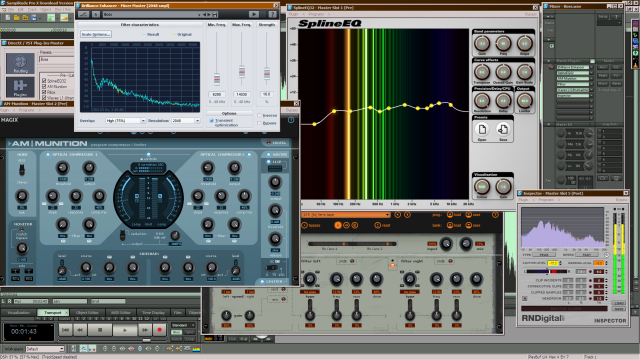1.1 Changes
Added Chap_2r.flac/.ogg/.mp3.
There is now an info file for Doomsday. This adds game filtering and a bit of information for the Snowberry launcher.
Download from the link below:
Hexen Soundtrack
Doomsday can also load either the MP3 or Ogg version of the soundtrack. Just drop the Music-*.pk3 file into the \Doomsday\snowberry\addons directory, and choose the file in Hexen startup options. Version 1.1 features a Doomsday info snippet, but as it is the files in 1.0 work right away (they just lack a UI description).
The full resolution soundtrack is up (which sadly ZDoom can't play correctly, as it's 96/24 FLAC). That is the version recommended for direct playback. It will work with any player supporting FLAC, such as Foobar2000, Winamp, XMPlay, VLC (cross-platform), Audirvana (Mac), Cog (Mac), etc. Make sure Winamp has "24-bit output" enabled in settings if it's a newer version, and/or the FLAC plugin has 24-bit output on. A good ASIO or KS output plugin is also recommended for Winamp. Linux soundsystems may also have to be reconfigured to support 96/24 output. Mac owners need not worry, MacOS supports bit-accurate output out-of-the-box, and x86 Macs all come with 192/24 audio.
What's special about it: the original mixes are 96 KHz/32-bit, made with dedicated software synths and a new percussion/drumkit sampler. This means the mixes' quality is on par with Hexen II/Heretic II CD soundtrack quality, if not better (not a joke - small percussion at least is a lot crisper).
See below for differences between formats. Basically you get what you pay for with size, Q6 Ogg is the worst (on some pieces - like Wobabyr.ogg - it even reminds of a wavetable MIDI synth), 320-kbps MP3 is slightly better, 48/24 FLAC sounds more like the real thing, and the real thing (96/24) doesn't have any problems.
Try out the MP3 demos at the project page to get an idea.
This was made with some feedback from Kevin Schilder himself, and he's listened to the mixes and he approves
Update
Sounds.pk3 has been updated to version 1.1. This is a bit better, though still far from ideal. The trouble is, many original Hexen wave files are clipped into the sky and have a DC offset of around +10%. 1.1 includes sounds with corrected DC offset, but it may have been a mistake as that, combined with the very high quality resampling algorithm used, makes them play noticeably weaker. Sounds.pk3 1.2 might fix this, for now though even as it is it helps avoid clipping and lets music mix better. In fact, you can turn up sound volume higher with Sounds.pk3 rather than without. But again, it's a matter of taste whether you'll want to use it - play the game for about 20 minutes with and without to decide.
96/24 full 1.1 soundtrack is up. This includes Chap_2r.flac.
The 48/24 FLAC package is up. This is the best ZDoom will do, and therefore it's how it's meant to be played.
Also, here's Chap_2R.flac and Chap_2R.ogg. It was missing in version 1.0 (initial release).
Turns out it's soundtrack to MAP50 (Marketplace) in Deathkings. You can pack either file into Music*.pk3 instead of downloading the new 1.1 file - Music.pk3 is just a zip file renamed, as many of you will know.

